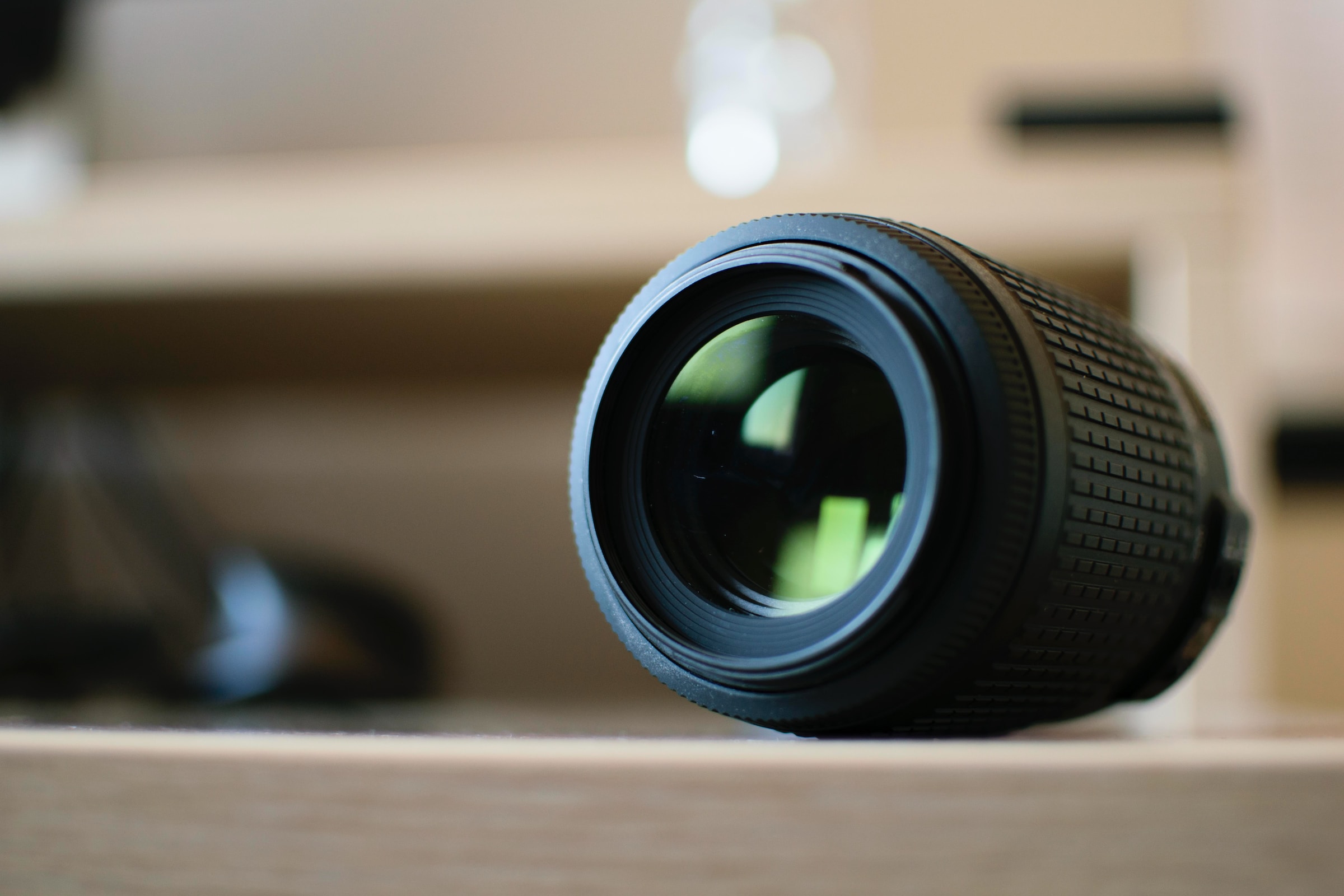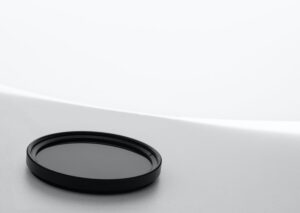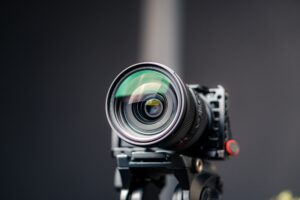If you are a photography enthusiast, you might have wondered who makes the best camera lenses.
After all, lenses are one of the most important and expensive components of your camera gear. They can make a huge difference in the quality and style of your photos.
But the answer to this question is not so simple.
There are many factors that affect lens quality, such as sharpness, distortion, chromatic aberration, autofocus, etc.
There are also different types of lenses for different purposes, such as zoom, prime, wide-angle, telephoto, macro, etc.
Moreover, there are dozens of lens brands in the market, each with their own strengths and weaknesses.
Some of them are more popular and well-known, such as Canon, Nikon, Sony, and Leica.
Others are more niche and specialized, such as Sigma, Tamron, Tokina, Zeiss, Samyang, etc.
So how do you choose the best lens brand for your photography needs?
In this article, we will compare some of the most prominent lens brands and their offerings.
We will also give you some tips on how to evaluate lens quality and performance.
By the end of this article, you will have a better idea of who makes the best camera lenses for you.
Key Takeaways
- There is no definitive answer to who makes the best camera lenses. It depends on your budget, style, preference, camera compatibility, etc.
- Different types of lenses have different applications and advantages. For example, zoom lenses are more versatile and convenient, while prime lenses are more sharp and fast.
- Different lens brands have different features and characteristics. For example, Canon lenses are known for their wide range of options and innovative features, while Nikon lenses are known for their durability and reliability.
- You should experiment with different lens brands and find what works best for you. You can also use online reviews and comparisons to help you make an informed decision.
Canon

Canon is one of the most popular and well-known lens brands in the market.
It has been producing lenses since 1937 and has a loyal fan base among professional and amateur photographers alike.
One of the main advantages of Canon lenses is their wide range of options.
Canon offers over 100 lenses for its DSLR and mirrorless cameras, covering almost every focal length and aperture imaginable.
Whether you need a wide-angle lens for landscape photography, a telephoto lens for wildlife photography, or a macro lens for close-up photography, Canon has something for you.
Another advantage of Canon lenses is their compatibility with Canon cameras.
Canon lenses are designed to work seamlessly with Canon cameras, ensuring optimal performance and functionality.
For example, Canon lenses can take advantage of Canon’s Dual Pixel CMOS AF, which is a fast and accurate autofocus system that works well in both stills and video modes.
A third advantage of Canon lenses is their optical performance.
Canon lenses are generally sharp, have low distortion, and produce pleasing colors and contrast.
Some Canon lenses also have innovative features, such as image stabilization, which reduces camera shake and blur, and diffractive optics, which reduces chromatic aberration and weight.
Here are some examples of Canon lenses that are suitable for different genres of photography:
| Genre | Lens | Features |
|---|---|---|
| Travel | EF 24-105mm f/4L IS II USM | A versatile zoom lens that covers a wide range of focal lengths from wide-angle to telephoto. It has image stabilization and weather sealing. |
| Landscape | EF 16-35mm f/2.8L III USM | A wide-angle zoom lens that captures expansive scenes with high sharpness and low distortion. It has a fast aperture and weather sealing. |
| Portrait | EF 85mm f/1.4L IS USM | A prime lens that produces flattering portraits with smooth bokeh and natural colors. It has image stabilization and weather sealing. |
| Wildlife | EF 100-400mm f/4.5-5.6L IS II USM | A telephoto zoom lens that reaches distant subjects with high clarity and detail. It has image stabilization and weather sealing. |
Of course, Canon lenses are not perfect.
One of the main drawbacks of Canon lenses is their high price. Canon lenses tend to be more expensive than other brands, especially their L-series, which are their premium lenses.
For example, the EF 16-35mm f/2.8L III USM costs around $2,000, while a similar lens from Sigma, the 14-24mm f/2.8 DG HSM Art, costs around $1,300.
Another drawback of Canon lenses is their weight.
Canon lenses tend to be heavier than other brands, especially their zoom lenses and L-series lenses. For example, the EF 100-400mm f/4.5-5.6L IS II USM weighs around 1.6 kg, while a similar lens from Tamron, the 100-400mm f/4.5-6.3 Di VC USD, weighs around 1.1 kg.
A third drawback of Canon lenses is their lack of third-party support. Canon lenses are not compatible with many third-party accessories, such as adapters, converters, and extenders.
This limits the flexibility and versatility of Canon lenses, especially for users who want to use them with other camera brands or systems.
Nikon

Nikon is another leading lens brand that competes with Canon. It has been producing lenses since 1933 and has a reputation for quality and reliability among professional and amateur photographers alike.
One of the main benefits of Nikon lenses is their durability. Nikon lenses are built to last and withstand harsh conditions.
They have metal mounts, rubber seals, and protective coatings that resist dust, moisture, and scratches. Some Nikon lenses also have fluorine coatings that repel water, oil, and dirt.
Another advantage of Nikon lenses is their reliability. Nikon lenses are tested and calibrated to ensure consistent performance and functionality.
They have silent wave motors that provide fast and quiet autofocus, and electromagnetic diaphragms that provide accurate aperture control.
In addition, Nikon lenses are well known for their image quality. Nikon lenses are generally sharp, have low distortion, and produce vivid colors and contrast.
Some Nikon lenses also have advanced features, such as vibration reduction, which reduces camera shake and blur, and nano crystal coat, which reduces ghosting and flare.
Here are some examples of Nikon lenses that are suitable for different genres of photography:
| Genre | Lens | Features |
|---|---|---|
| Macro | AF-S VR Micro-Nikkor 105mm f/2.8G IF-ED | A prime lens that captures close-up details with high magnification and sharpness. It has vibration reduction and weather sealing. |
| Sports | AF-S NIKKOR 70-200mm f/2.8E FL ED VR | A telephoto zoom lens that tracks fast-moving subjects with high speed and accuracy. It has vibration reduction, fluorine coating, and weather sealing. |
| Street | AF-S NIKKOR 35mm f/1.8G ED | A prime lens that captures candid scenes with natural perspective and low-light performance. It has a fast aperture and silent wave motor. |
| Architecture | PC NIKKOR 19mm f/4E ED | A wide-angle lens that corrects perspective distortion and enhances depth of field with tilt-shift movements. It has nano crystal coat and weather sealing. |
However, one of the main drawbacks of Nikon lenses is their limited availability.
Nikon lenses tend to be less available than other brands, especially their newer models. This can make it hard to find or buy them in some regions or markets.
Another downside of Nikon lenses is their compatibility issues with some cameras.
Nikon lenses are not compatible with many older or lower-end Nikon cameras, such as the D3xxx series or the D5xxx series. This can limit the functionality and performance of Nikon lenses, especially for users who want to use them with these cameras.
Finally, some photographer’s believe that Nikon lenses have an outdated design. Nikon lenses tend to have an older and bulkier design than other brands, especially their prime lenses.
This can make them less appealing and ergonomic for some users, especially for those who prefer a more modern and sleek look.
Sony

Sony is a relatively new but rapidly growing lens brand that caters to mirrorless cameras. It has been producing lenses since 2006 and has a strong presence in the digital imaging market.
Sony lenses are known for their compactness. Sony lenses are designed to be smaller and lighter than other brands, especially for their full-frame cameras. This makes them more portable and convenient for travel and everyday use.
Another benefit of Sony lenses is their speed. Sony lenses are designed to be faster and more responsive than other brands, especially for their autofocus system.
Sony uses a hybrid autofocus system that combines phase detection and contrast detection to achieve fast and accurate focus in both stills and video modes.
Lastly, Sony are known for their innovation. Sony lenses are designed to be more innovative and cutting-edge than other brands, especially for their features and technology.
Sony uses a variety of features, such as optical steady shot, which reduces camera shake and blur, and direct drive super sonic wave motor, which provides smooth and quiet focus.
Sony also uses a variety of technologies, such as extreme aspherical elements, which reduce spherical aberration and coma, and ZEISS T* coating, which reduces ghosting and flare.
Here are some examples of Sony lenses that are suitable for different genres of photography:
| Genre | Lens | Features |
|---|---|---|
| Video | FE 24-70mm f/2.8 GM | A standard zoom lens that covers a versatile range of focal lengths from wide-angle to portrait. It has optical steady shot, direct drive super sonic wave motor, and weather sealing. |
| Low-light | FE 50mm f/1.2 GM | A prime lens that captures stunning images in low-light situations with high sharpness and bokeh. It has extreme aspherical elements, ZEISS T* coating, and weather sealing. |
| Astro | FE 12-24mm f/2.8 GM | A ultra-wide-angle zoom lens that captures breathtaking views of the night sky with high resolution and low distortion. It has extreme aspherical elements, ZEISS T* coating, and weather sealing. |
| Wedding | FE 70-200mm f/2.8 GM OSS | A telephoto zoom lens that captures beautiful portraits and candid moments with high speed and accuracy. It has optical steady shot, direct drive super sonic wave motor, and weather sealing. |
A disadvantage of Sony lenses is their high cost. Sony lenses tend to be more expensive than other brands, especially their G Master series, which are their flagship lenses.
For example, the FE 50mm f/1.2 GM costs around $2,000, while a similar lens from Canon, the RF 50mm f/1.2L USM, costs around $1,700.
Moreover, another drawback of Sony lenses is their inconsistency. Sony lenses tend to have more variation in quality and performance than other brands, especially for their autofocus system.
Some Sony lenses may have issues with focus hunting, focus breathing, or focus noise. This can affect the usability and reliability of Sony lenses, especially for users who demand high precision and consistency.
In addition, some people comment on Sony’s lack of variety. Sony lenses tend to have fewer options than other brands, especially for their APS-C format cameras.
This can limit the choices and flexibility of Sony lenses, especially for users who want to explore different types of photography or genres.
Leica

Leica is a legendary and prestigious lens brand that is known for its craftsmanship and quality. It has been producing lenses since 1925 and has a cult following among photography enthusiasts and collectors alike.
Leica lenses are renowned for their exceptional sharpness and detail across the entire frame and aperture range. They have minimal distortion, chromatic aberration, or vignetting that degrade image quality.
Leica lenses are also famous for their high contrast and rich colors that create a distinctive look and feel in the photos. They have a unique coating that enhances light transmission and reduces reflections.
Lastly, Leica lenses are praised for their smooth and creamy bokeh that isolates the subject from the background with elegance and style. They have a circular aperture that creates a natural and pleasing blur effect.
Here are some examples of Leica lenses that are suitable for different genres of photography:
| Genre | Lens | Features |
|---|---|---|
| Documentary | Summilux-M 35mm f/1.4 ASPH | A prime lens that captures realistic scenes with high clarity and low-light performance. It has a fast aperture and a compact design. |
| Fine art | APO-Summicron-M 50mm f/2 ASPH | A prime lens that captures artistic images with high resolution and contrast. It has an apochromatic design that eliminates color fringing and a metal hood that protects the front element. |
| Street | Summicron-M 28mm f/2 ASPH | A prime lens that captures candid scenes with natural perspective and discreetness. It has a moderate wide-angle view and a metal barrel that reduces weight. |
| Portrait | Noctilux-M 75mm f/1.25 ASPH | A prime lens that produces stunning portraits with smooth bokeh and shallow depth of field. It has an extremely fast aperture and an integrated lens hood that prevents flare. |
However, Leica lenses are known for their exorbitant price tag. Leica lenses tend to be more expensive than other brands, especially their M-series, which are their rangefinder lenses.
For example, the Noctilux-M 75mm f/1.25 ASPH costs around $13,000, while a similar lens from Sony, the FE 85mm f/1.4 GM, costs around $1,800.
Also, Leica lenses tend to be less available than other brands, especially their newer models. This can make it hard to find or buy them in some regions or markets.
Finally, Leica lenses tend to have manual focus only, which means that the user has to adjust the focus ring by hand. This can make it challenging and time-consuming to achieve accurate and precise focus, especially for users who are used to autofocus systems.
Fuji

Fuji is a niche but respected lens brand that specializes in APS-C format cameras. It has been producing lenses since 1934 and has a loyal fan base among photography enthusiasts and professionals alike.
Fuji lenses are designed to be more affordable and accessible than other brands, especially for their quality and performance. They offer a good value for money and a lower entry barrier for photography beginners.
In addition, Fuji lenses are designed to be more user-friendly and intuitive than other brands, especially for their controls and feedback.
They have physical aperture rings, focus rings, and zoom rings that provide tactile and visual feedback. They also have markings and scales that indicate the aperture, focus distance, and depth of field.
Lastly, Fuji lenses are designed to have more character and personality than other brands, especially for their rendering and bokeh.
They have a unique optical design that creates a distinctive look and feel in the photos. They also have a variety of bokeh shapes, such as hexagonal, octagonal, or rounded.
Here are some examples of Fuji lenses that are suitable for different genres of photography:
| Genre | Lens | Features |
|---|---|---|
| Landscape | XF 10-24mm f/4 R OIS | A wide-angle zoom lens that captures scenic views with high resolution and low distortion. It has optical image stabilization and weather resistance. |
| Travel | XF 18-55mm f/2.8-4 R LM OIS | A standard zoom lens that covers a versatile range of focal lengths from wide-angle to telephoto. It has optical image stabilization and linear motor. |
| Food | XF 60mm f/2.4 R Macro | A prime lens that captures close-up details with high magnification and sharpness. It has a macro mode and a metal mount. |
| Fashion | XF 56mm f/1.2 R | A prime lens that produces flattering portraits with smooth bokeh and shallow depth of field. It has a fast aperture and an apodization filter. |
However, Fuji lenses tend to have a narrower focal range than other brands, especially for their telephoto lenses. This can limit the reach and versatility of Fuji lenses, especially for users who want to capture distant or small subjects.
Also, Fuji lenses tend to have more distortion than other brands, especially for their wide-angle lenses. This can affect the accuracy and realism of Fuji lenses, especially for users who care about geometric fidelity.
Lastly, Fuji lenses are designed for APS-C format cameras only, which means that they cannot be used with full-frame cameras. This can limit the compatibility and flexibility of Fuji lenses, especially for users who want to switch or upgrade to full-frame cameras.
Other Lens Brands

Besides the five lens brands that we have discussed so far, there are also some other lens brands that are worth considering or exploring, such as Sigma, Tamron, Tokina, Zeiss, Samyang, etc.
These lens brands offer different features and advantages, such as lower prices, higher quality, wider apertures, unique perspectives, etc.
They also offer different types and styles of lenses, such as macro, fisheye, tilt-shift, cinema, etc.
Here are some examples of other lenses that are suitable for different genres of photography:
| Genre | Lens | Brand | Features |
|---|---|---|---|
| Macro | SP 90mm f/2.8 Di Macro 1:1 VC USD | Tamron | A prime lens that captures close-up details with high magnification and sharpness. It has vibration compensation and ultrasonic drive. |
| Fisheye | 10-17mm f/3.5-4.5 AT-X 107 DX Fisheye | Tokina | A fisheye zoom lens that captures ultra-wide-angle views with high distortion and fun effects. It has a one-touch focus clutch mechanism and a water-repellent coating. |
| Tilt-shift | TS-E 24mm f/3.5L II | Canon | A tilt-shift lens that corrects perspective distortion and enhances depth of field with tilt and shift movements. It has an aspherical design and a subwavelength structure coating. |
| Cinema | CP.3 25mm T2.1 | Zeiss | A cinema lens that captures cinematic images with high resolution and contrast. It has a compact and lightweight design and an interchangeable mount system. |
| Manual | 14mm f/2.8 IF ED UMC Aspherical | Samyang | A manual lens that captures wide-angle images with high sharpness and low coma. It has an internal focusing system and a multi-layer coating. |
Conclusion
In this article, we have compared some of the most prominent lens brands and their offerings. We have also given you some tips on how to evaluate lens quality and performance.
We have learned that there is no definitive answer to who makes the best camera lenses. It depends on your budget, style, preference, camera compatibility, etc.
Different types of lenses have different applications and advantages. For example, zoom lenses are more versatile and convenient, while prime lenses are more sharp and fast.
Different lens brands have different features and characteristics. For example, Canon lenses are known for their wide range of options and innovative features, while Nikon lenses are known for their durability and reliability.
We hope that this article has helped you to answer the question of who makes the best camera lenses for you. Thanks for reading!






![Read more about the article The Best Camera Lens for Sports Photography [2023]](https://photographyexplorer.com/wp-content/uploads/2023/09/best-camera-lens-for-sports-photography-300x240.jpg)

![Read more about the article Best Lens for Urban Photography: Top Picks for Capturing City Life [2023]](https://photographyexplorer.com/wp-content/uploads/2023/10/best-lens-for-urban-photography-300x200.jpg)